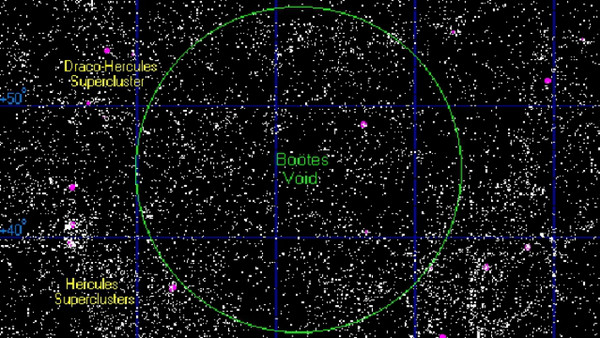8 Biggest, Weirdest Mysteries In Space
5. What's Causing Boötes Void?

The night sky looks pretty evenly dotted with the pinpoint lights of stars, and for the most part it is. Sure there are denser and emptier parts of space, and stars tend to clump together in galaxies, then those galaxies come together in clusters and groups and so on.
Astronomically speaking, it's never too far to the next galaxy, except for a region of space called Boötes void. This is a huge, spherical region of space that is conspicuously empty - free from galaxies planets and stars - and no one really knows why.
The void measures 330 million light years in diameter (the Milky Way is only 100,000 light years in diameter) and is about 700 million light years from Earth. The thing takes up nearly 0.27% of the observable universe and should, by all rights, contain as many as 10,000 galaxies.
Whilst small void can form when galaxies cluster together, scientists are still scratching their heads as to how this enormous supervoid could have come into being.